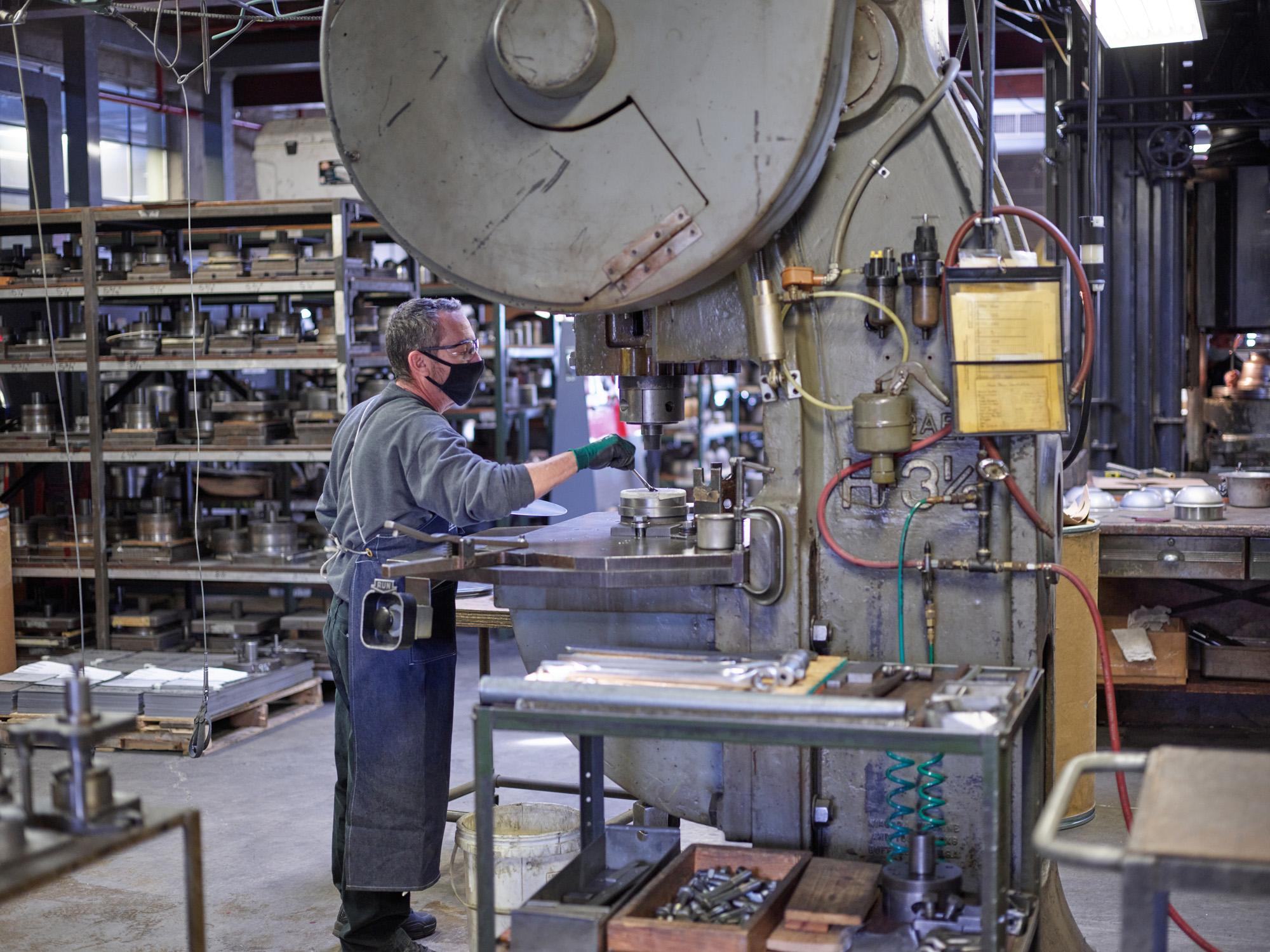
Have you ever thought about how metal is formed in manufacturing? Well, look no further because I’m about to tell you a little something about how hydroforming is the way to go for your aerospace needs, and how it differs from stamping. These are two processes used throughout manufacturing in the automotive, aerospace, and appliance industries. Now you may be asking yourself: Can I just use one process? Are there differences? What is the cost for tooling and labor efficiency? Although both form metal to your exact specifications, there are differences between them when it comes to the process, materials used, efficiency, cost, and more. I’m going to lay out an overview of both, and by the end of this article, you will know why choosing CB Kaupp and hydroforming for your aerospace parts is the way to go.
What is stamping?
Stamping is a process where a mechanical or hydraulic press and a die are used to shape metal sheets. This process is best for flat or slightly curved parts like panels and brackets, and includes processes like blanking, punching, bending, and embossing.
Stamping Efficiency and Costs
When it comes to stamping, you may require multiple steps and more trimming of the materials, as well as welding or assembly, so this tends to lead to more waste throughout the process. The cost of a die that is durable enough to withstand many hits over the course of production can also result in an initial higher cost for simple parts; however, the faster cycle times make stamping well-suited for the mass production of simpler shapes. Remember, when I say “simpler parts” though I’m not talking about 2nd grade math – I’m saying stamping will use simpler geometries unless multiple operations are used. These “simpler” shapes have less flexibility in thickness and shape complexity.
Best applications for stamping
Stamping will be the best choice for several applications, including body panels (both auto and aero), reinforcements, fasteners, and metal cases. However, at CBK, we offer a wider variety of complex shapes, leveraging our combined knowledge of over 100 years from a company that has been in business since 1924.
CBK and Hydroforming
CBK started the hydroform process in the mid-fifties and has been a leader in the forming of sheet metal across industries, producing hemispheres for fire suppression to trophies. For hydroforming, we use high-pressure hydraulic fluid and a rubber diaphragm to press room-temperature metal into a mold cavity. This is the ideal route to go for complex, hollow, or tubular shapes commonly used for frame components and aerospace parts.
Hydroforming Efficiency and Costs
It is more material-efficient with less waste due to control and the reduction of the number of parts needed to form complex shapes. Tooling costs can vary but will be less expensive than paying for a die set. Hydroforming enables multiple runs over time, resulting in fewer parts and welds, which can reduce overall costs.
If you’re thinking, “This sounds like a longer setup time!” You are correct, but we believe “measure twice, cut once” is always the best policy!
Overall, hydroforming is excellent for complex geometries and smooth contours, allowing for stronger, lighter parts with uniform wall thickness. CBK accommodates complex geometries, forms a wide range of metals, including exotic alloys, and can provide a costeffective solution for your next challenging forming project